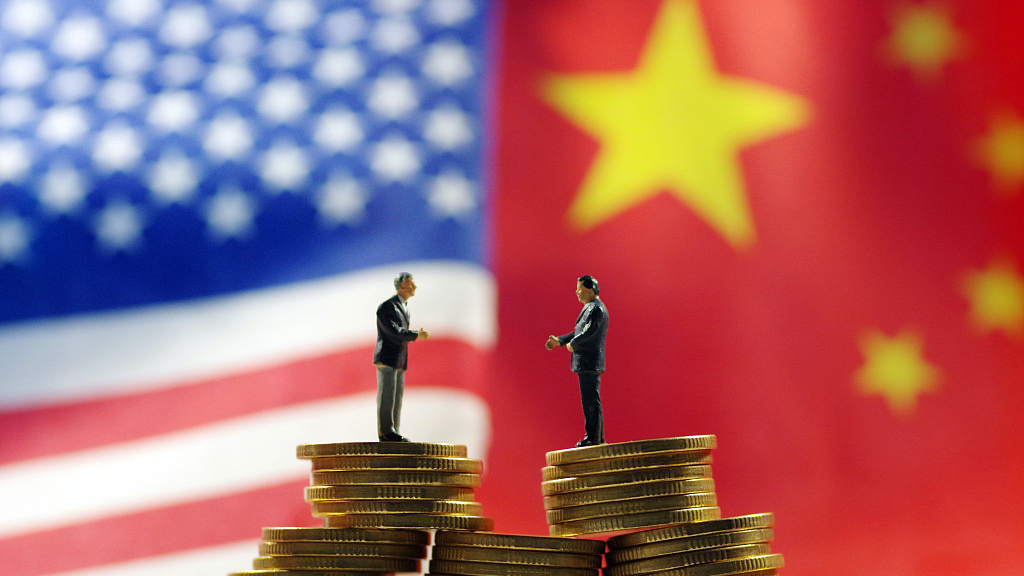
Editor's note: Tom Fowdy, graduated from Oxford University's China Studies Program and majored in politics at Durham University, writes about international relations focusing on China and the Democratic People's Republic of Korea. The article reflects the author's opinions, and not necessarily the views of CGTN.
The next few days will be a heated time for U.S.-China trade talks. New U.S. tariffs are scheduled to go into place on December 15th, which would impose levies on the remaining 300 billion U.S. dollars of Chinese imports to the United States. As this deadline approaches, talks between the two countries are going on with representatives from both nations being cautiously, but not definitively optimistic of progress.
On December 6, Beijing reportedly eased tariffs on soybean and pork imports from the U.S as an optimistic gesture to drive talks forwards, whilst American officials such as Larry Kudlow saying a trade deal is close but affirmed the President would "walk away from it" if the terms were not right. As this has been going on, the media atmosphere has been a confusing mix of optimism and pessimism, with a great deal of unverified "insider sources" speculating gossip either way. This has also been entrenched by previously negative comments by Trump who hinted he could "wait until 2020" if necessary.
As a whole, this has made the predictability of what is about to happen next impossible to truly decipher. The upcoming week will nevertheless prove to be a decisive moment in shaping the 2020 trajectory of the U.S.-China trade war, be it for better or for worse. There is enough evidence to note that both sides are serious about making some kind of deal. However, as has been pointed out before, what will prove to be the sticking point as to whether it can be seen as "the right deal" accordingly.

Liu He, Chinese vice premier (center), waves to the press while arriving at the Office of the U.S. Trade Representative in Washington, DC, U.S., May 9, 2019. /VCG Photo
Liu He, Chinese vice premier (center), waves to the press while arriving at the Office of the U.S. Trade Representative in Washington, DC, U.S., May 9, 2019. /VCG Photo
First of all, Trump is known for an abrasive negotiating style which makes heavy demands and refuses to concede ground, be it with friend or foe. Recent history shows that if he doesn't get what he wants he will walk away and escalate the situation. Owing to this position, negotiations he had with the DPRK have gotten nowhere and in every trade war "truce" window his option has been to push for even more tariffs. The President believes more strongly in unilateral capitulation, than compromise.
Nevertheless, in this scenario he has a great deal more to lose if he again opts for escalation. The President has been tempered by concerns over a slowing U.S. economy, his anxiety over market confidence and the contraction of American manufacturing and agriculture. While recent rhetoric shows he is not afraid to escalate again and thus implement tariffs on December 15, these are push factors towards making some kind of agreement. Trump has placed some stakes on the eventual achievement of a "phase one" trade deal, if he has been doubtful at times, White House rhetoric has signaled it's been about "when" than "if" at worst: He wants a deal, but he wants his demands met.
On the other hand, China is willing to make a deal with the United States. However, this deal should respect the country's national interests than simply being a one-sided capitulation to U.S demands. As mentioned in an earlier piece, I highlighted how China is learning to live with the trade war environment by diversifying its options. An agreement might be in China's national interests; however they are not "desperate" and will not sign up to one for the sake of it.
In this case, what happens this week is a test to see just how much each side is prepared to stretch their position and secure a "middle ground." Beijing has insisted tariffs be removed as part of any deal, while Washington wants pledges over intellectual property, structural reform, market access, agricultural commitments and industrial subsidies. While there is room for compromise, it is a question of just how much compromise both sides can accept. The stakes are now higher than ever, but as is the political will of both governments.
The next few days are unpredictable. There might be a "phase one" deal, there might not be. One thing is for certain nevertheless, that failure to achieve such and further escalation will paint global growth prospects bleak for 2020. In logical reasoning, both sides would quickly establish common interests, but in the era of Trump nothing tends to be stable or certain.
(If you want to contribute and have specific expertise, please contact us at opinions@cgtn.com)